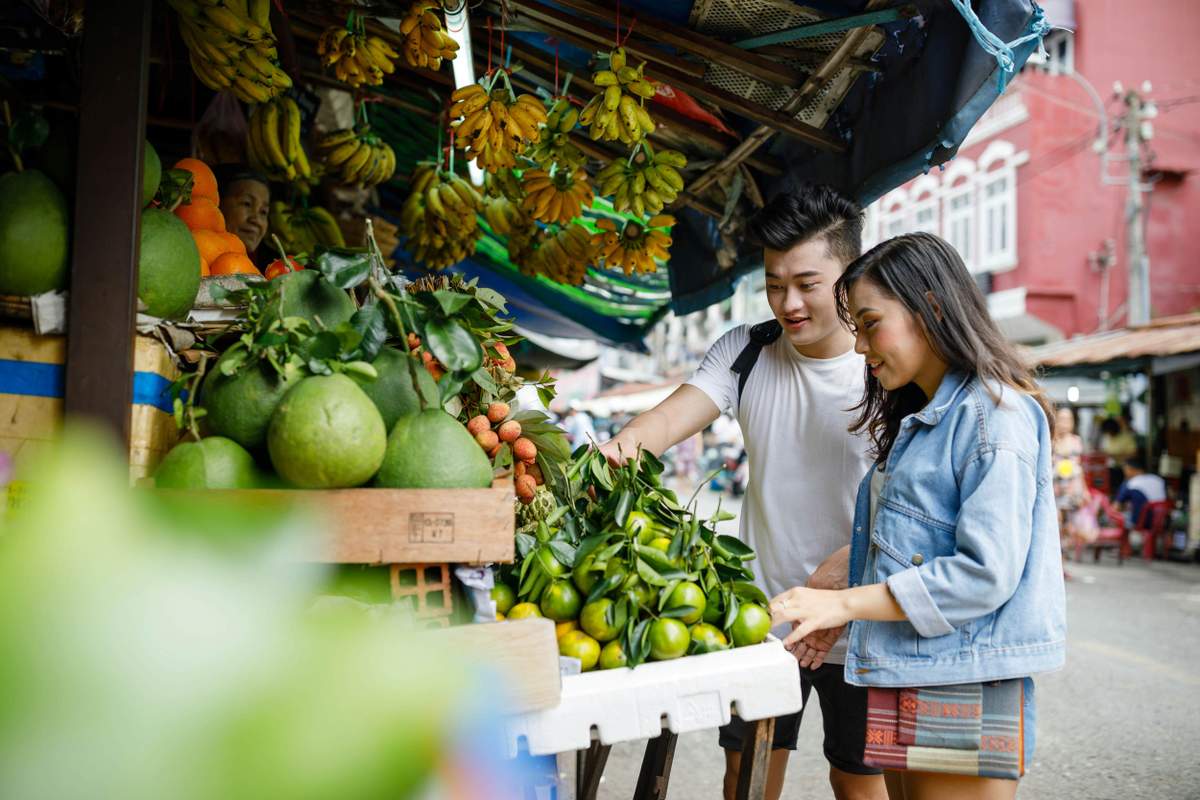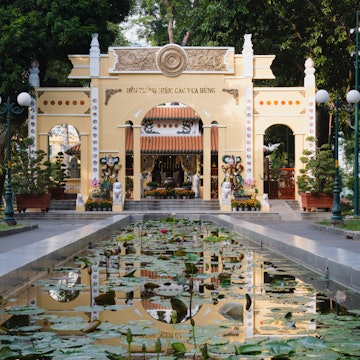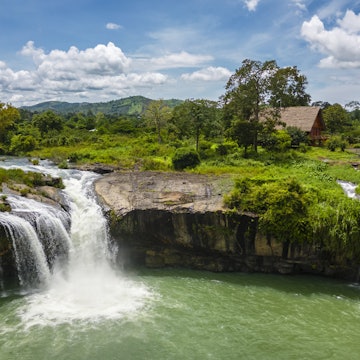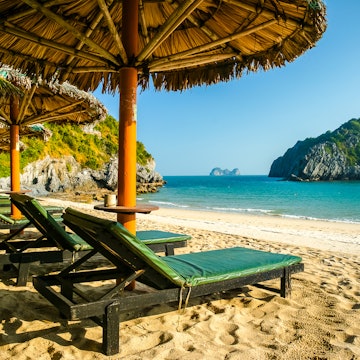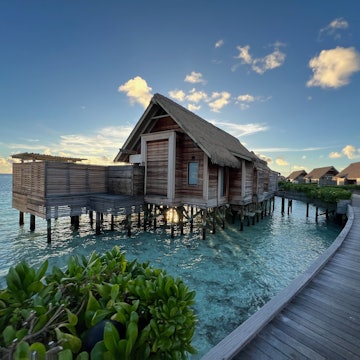

Pick the right time for your visit to Vietnam with this seasonal guide. John Bill/Shutterstock
Spilling along the eastern shores of mainland Southeast Asia, Vietnam serves up magical experiences at any time of year, but some seasons are easier for travelers than others.
A lot depends on what you are looking for from your trip. If you're lured to Vietnam by the beaches of the central coast, you probably want to stick to the drier months from February to June, before the peak summer crowds arrive. However, Phu Quoc in the far south sees its best beach weather from December to March.
Activities are strongly affected by the seasons. If you plan to go trekking in the highlands of northwest Vietnam, October to March is the optimum season. For cruising around Halong Bay, try March to April or October to November, avoiding summer storms and high-season crowds.
It's important to be aware that the weather can vary widely as you travel around Vietnam. The country spans 1650km (1025 miles) from north to south, taking in tall mountains in the north and flat, tropical wetlands in the Mekong Delta. From December to February, the highlands around Sapa can even see a dusting of snow while the Delta basks above 27°C (81°F).
To help you plan a perfect trip, here's our guide to the best times to visit Vietnam.

July and August are the top months for beach lovers
The hot, sticky high season from July to August is the busiest time of year to visit Vietnam, coinciding with favorable beach weather on the central coast and the summer school holidays, which send international and domestic tourism surging.
Demand for flights soars, and prices for accommodations can increase by as much as 50% in resort areas such as Danang and Nha Trang. Book flights and hotels well in advance and expect crowds on the sand at all the popular resorts.
The rest of the country is warm and humid, and sunny days are punctuated by spectacular summer monsoon downpours and even the odd typhoon on the coast. This is a poor time of year to visit the north, as rain can turn trekking trails into quagmires, and Hanoi and Halong Bay see sultry temperatures and some heavy showers.
On the festival calendar, Trung Nguyen (Wandering Souls Day, also known as Vu Lan) in August sees huge spreads of food left out for the spirits, and big celebrations take place at pagodas in places such as Ninh Binh, Ho Chi Minh City (HCMC) and Hanoi.

December to March is the season to visit Hanoi and Ho Chi Minh City (HCMC)
Winter in Vietnam tends to be drier and cooler than the sticky summer, and the weather can be downright chilly at higher elevations in the north. However, this is the perfect time to explore Vietnam's characterful northern and southern capitals, with manageable temperatures and low humidity taking the sting out of exploring Hanoi and Ho Chi Minh City on foot.
If you want to see more of the country, this is also a great time to head out to the Mekong Delta and the island of Phu Quoc, with warm (not scorching) temperatures and clear skies. The drier weather from January to March makes this a good time to explore the historic sights of Hue and Hoi An.
As April approaches, however, the mercury starts to climb to uncomfortable levels down south. The best time for trekking in Vietnam's northern highlands runs from October to April, but be aware that temperatures can be uncomfortably cool at night in December and January.
Another obstacle to easy travel is the Tet festival – officially, Tet Nguyen Dan – marking the Vietnamese lunar New Year in late January or early February. The whole country is on the move and prices for transport and hotels shoot skywards.
In December, the biennial Flower Festival brings fragrant blooms, pageants, wine and music to Dalat, while Buon Ma Thuot's annual coffee festival in March attracts lovers of a good cup of joe. Christmas Day – known in Vietnam as Le Giang Sinh – is a big deal for places with large Catholic communities, such as Hanoi, Ho Chi Minh City and Hue.
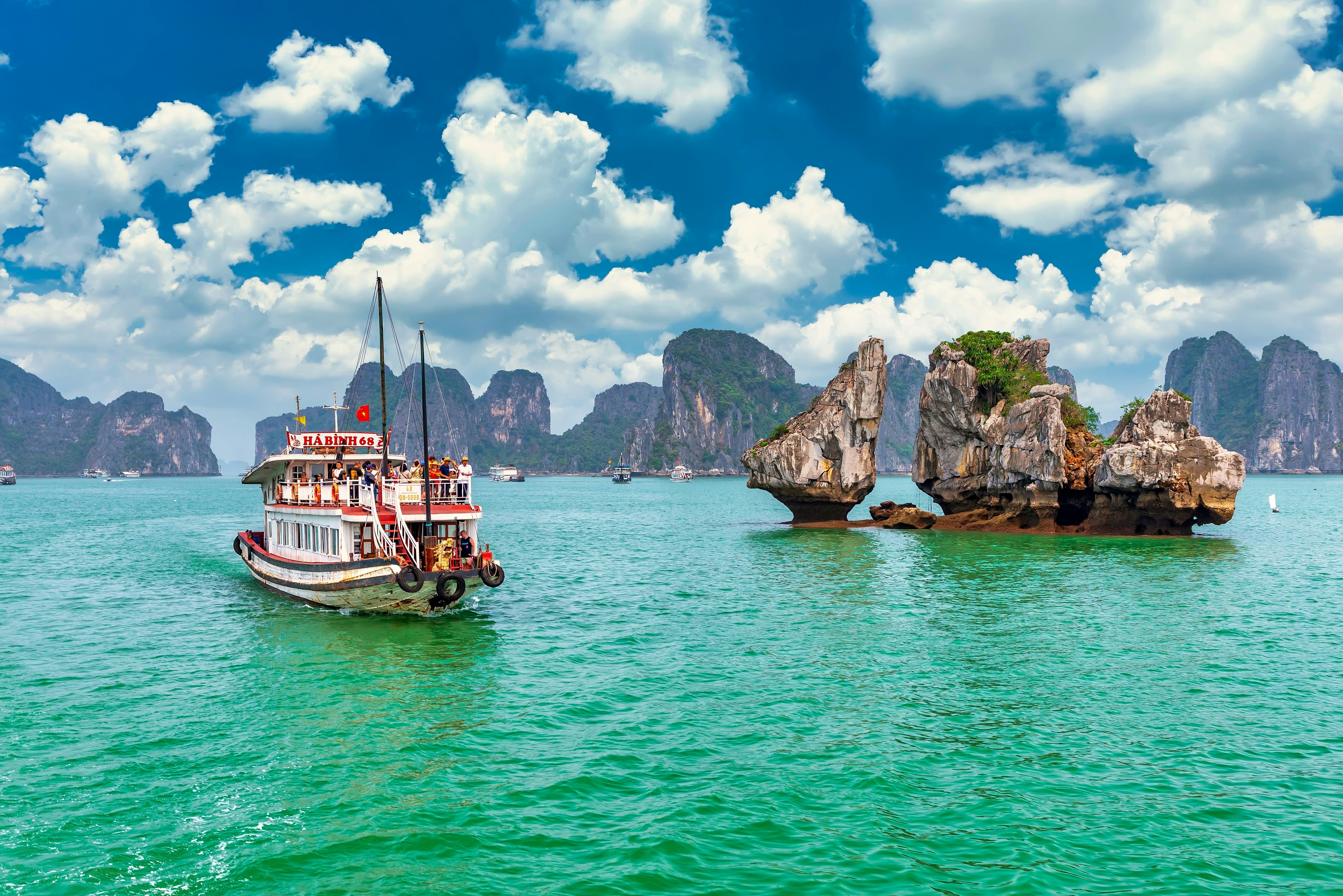
Visit from April to June and September to November to avoid the crowds
The low season in Vietnam coincides with the transition from the cooler, drier winter to the hot, humid summer and vice versa. From April to June and September to November, either side of the busy summer season, domestic and international tourism slows as schools are in session, and the weather is often unsettled but rarely extreme. You may get days of glorious sunshine, but also days of rain, so pack accordingly.
These transition periods are good times to avoid crowds at the sights, save money and explore the whole country, as the weather is not notably awful anywhere. October to November is a particularly favorable time to visit the islands and outcrops around Halong Bay (and its calmer and less commercial neighbor, Bai Tu Long Bay), with more dry days than wet days and mild temperatures.
The September to November window is also a great time to go trekking or riding a motorcycle in the highlands around Sapa. Terraced hillsides turn golden as the rice ripens, the weather is mild, trails are less muddy, and the peak summer crowds have thinned out.
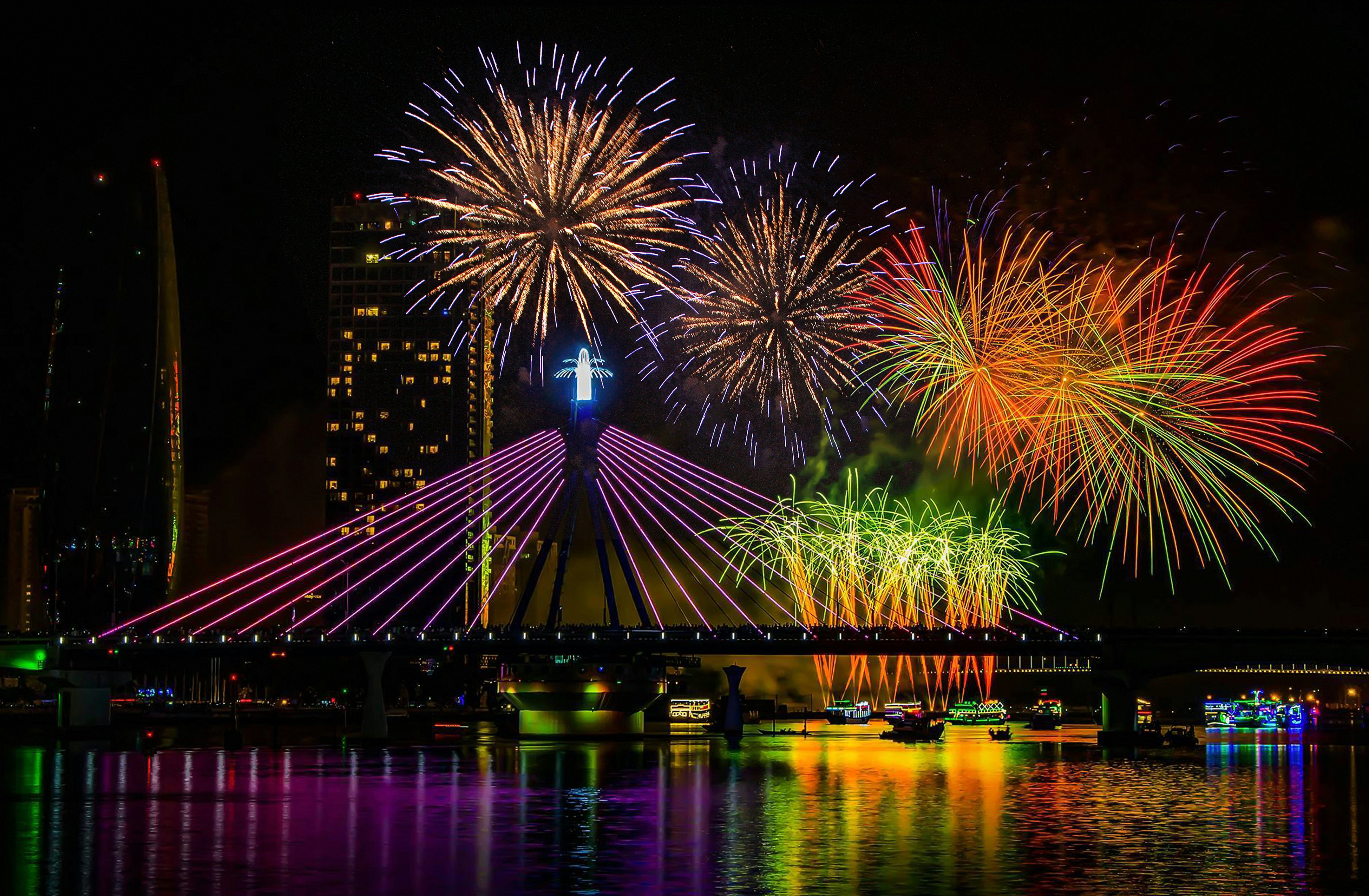
There are some interesting festivals too. Held in Hue in April, May or June, the biennial Hue Festival fills the city's historic citadel with color, music and twinkling lights, while the Nha Trang Sea Festival brings a similar party mood to Nha Trang every second June.
Vietnamese Buddhists celebrate the life of the Buddha with extravagant street processions in May for Phat Dan – best experienced in Ninh Binh or Ho Chi Minh City. Pyrotechnics enthusiasts of all kinds gather in Danang in June or July for the explosive Danang Fireworks Festival.
In the pre-winter season, aim to be in Hanoi on September 2, as Vietnam's National Day brings energetic rallies and fireworks to Ba Dinh Square and boat races to Hoan Kiem Lake. Tasty festival foods appear everywhere for Trung Thu, the Mid-Autumn Festival, in September or October, while dragon boats race on the waterways of the Mekong Delta for the Khmer Ok Om Bok Festival in October or November.
Visiting Vietnam during the typhoon season
Technically, the typhoon season in the Northwest Pacific runs from May to November, but in Vietnam, the biggest risk of storms is from August to September. The country sees four to six typhoons in an average year, with a risk of flooding and disruption to transport, particularly by air and sea. In September 2024, Typhoon Yagi – the worst storm to hit Vietnam in 30 years – caused extensive damage around Hai Phong.
The areas most affected by typhoons are the southern coast and the far north coast (including Halong Bay). The weather tends to be most severe near the shore; inland, you may just get heavy rain and the odd power cut. This is a time to be cautious but not paranoid – monitor weather reports and prioritize land-based activities over boat trips, domestic flights and beaches.






